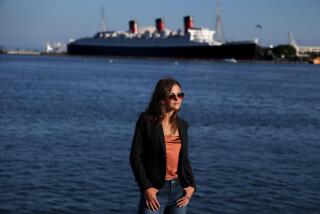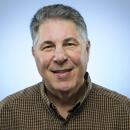You can thank Arthur Rosenfeld for energy savings
- Share via
Reporting from Sacramento — When octogenarian Arthur H. Rosenfeld vacates his utilitarian office at the California Energy Commission this week, one of his final tasks might seem of little consequence: He’ll turn off the lights.
But that simple act -- some would say compulsion -- has transformed California into a world leader in energy efficiency.
California homes are loaded with personal computers, widescreen TVs, iPods, PlayStations, air conditioners, massive refrigerators, hot tubs and swimming pool pumps. Despite that, Golden State residents today use about the same amount of electricity per capita that they did 30 years ago.
For that, they can largely thank Rosenfeld, a slight, bespectacled nuclear physicist fueled by a passion to wring the most out of every kilowatt. Polite and affable, with a knack for making science understandable to people who couldn’t screw in a lightbulb, Rosenfeld, starting in the 1970s, provided California energy regulators the data they needed to enact some of the toughest efficiency standards in the world.
New homes and buildings were required to be better insulated and fitted with energy-wise lighting, heating and cooling systems. Appliances had to be designed to use less power. Utilities were forced to motivate their customers to use less electricity.
The principle, Rosenfeld said, was simple: Conserving energy is cheaper and smarter than building power plants.
Not surprisingly, those rules were attacked by business groups as bureaucratic job killers. Rosenfeld, who received his doctorate from the University of Chicago, was called unqualified by critics at Pacific Gas & Electric Co., one of California’s largest utilities.
Yet these mandates have yielded about $30 billion annually in energy savings for California consumers. They’ve eliminated air pollution that’s the equivalent of taking 100 million cars off the roads. They have been copied by states and countries worldwide. California’s gains are so closely linked to Rosenfeld that they’ve been dubbed the Rosenfeld Effect in energy efficiency circles, where the 83-year-old has taken on rock star status.
U.S. Energy Secretary Steven Chu, who appeared on Comedy Central’s “The Daily Show” last year, told host Jon Stewart that Rosenfeld was “one of my local heroes” for his work on promoting the use of reflective white roofs to combat climate change. Such roofs have been mandatory on new commercial buildings in California since 2005.
“Here’s a very distinguished physicist, who said the energy problem is so huge that I have to change my career,” Chu said in an interview with The Times. “He set an example for me as later in life I got concerned about the energy problem.”
Climate change experts say more heroes will be needed after last month’s disappointing climate talks in Copenhagen, when major nations failed to sign a concrete agreement on carbon reduction. Rosenfeld is seen as an example of how dogged persistence at the local level can turn the impossible into the achievable.
“He shows cheerfulness at a time when everyone is warning that the sky is falling by saying that we can do this if we just put our minds to work,” said V. John White, executive director of the Center for Energy Efficiency and Renewable Technologies in Sacramento. “He’s influenced . . . utilities and policy managers around the world. . . . He’s lived to see his ideas go from the fanciful to the mainstream. He’s a prophet in his own time.”
All the praise is a little embarrassing for the self-effacing Rosenfeld, whose penchant for conservation came early. Born in 1926 in Birmingham, Ala., he spent his early years in New Orleans as the Great Depression gripped the nation. His father was an expert in sugar cane cultivation, a vocation that took the family to Egypt when Rosenfeld was 6 years old.
It was there that the child learned that resources weren’t infinite. His parents, budget-minded Southerners, drove tiny cars to save on gas andinsisted he turn off lights when leaving a room. These were familiar practices to the European children who attended his Western-style school.
“Electricity wasn’t dirt cheap in Europe and certainly not in Egypt,” Rosenfeld said. “Europeans only used half as much energy per dollar of GDP [gross domestic product], and it was clear that their lifestyle was as good as ours.”
Rosenfeld returned to the United States to get his bachelor’s degree in industrial physics at Virginia Polytechnic Institute. He taught radar operators at Navy Pier in Chicago during World War II, then went on to study particle physics at the University of Chicago under the legendary Enrico Fermi, who built the world’s first nuclear reactor under the university’s football stadium.
In 1954, Rosenfeld took a position at UC Berkeley at what was to become the Lawrence Berkeley National Laboratory, joining Luis Alvarez in the development of hydrogen bubble chambers for detecting subatomic particles. “Fermi wrote me a wonderful recommendation as his ‘second-most promising graduate student,’ ” Rosenfeld said. He recalled that Fermi, who would die soon after, “coyly declined to identify his first.”
Fifteen years later, Alvarez, backed by a team of scientists that included Rosenfeld, won the Nobel Prize for physics. But climbing to the heights of quantum physics research was not to be Rosenfeld’s destiny.
The turning point came on a cool Friday night in November 1973 during the second Arab oil embargo. Television screens beamed images of frustrated Americans in gigantic cars queuing up for fuel. Pained to see his nation humbled by its spendthrift habits, Rosenfeld looked around his own building. Most of his colleagues had departed hours before, not bothering to turn off the lights. Rosenfeld went from office to office flipping switches. His life’s mission suddenly clicked. “The cheapest energy is what you don’t use” became Rosenfeld’s guiding mantra from that night on. “It would be more profitable to attack our own wasteful energy use than to attack OPEC.”
He set out on a mission to engineer U.S. appliances and buildings to use less energy. It wouldn’t be easy. Pressure was mounting to build massive nuclear facilities to meet California’s growing needs. Manufacturers and builders would undoubtedly balk at tough efficiency standards. The key, Rosenfeld concluded, lay in government policy that could force these changes.
So he and his colleagues at the Lawrence Berkeley lab produced meticulous research showing that conservation was the bedrock of true energy security. Patient, persistent and armed with reams of data and unshakable confidence in his findings, the scientist made believers of officials including Jerry Brown, then-governor of California.
“He gave validation to the very unorthodox notion that economic growth could be decoupled from energy growth,” said Brown, now California’s attorney general. “He was really the guru of efficiency.”
Under Brown, California set upits first Energy Commission and passed its first-ever efficiency standards for buildings and household appliances.
Appliance makers claimed they’d be forced to offer stripped-down models that customers wouldn’t buy. Then they quickly set about innovating. California is one of the world’s most lucrative consumer markets, and manufacturers weren’t about to get left off the shelves. Today’s refrigerators use a quarter of the electricity of their 1970s ancestors but are bigger and equipped with more doo-dads than ever. Consumers have saved billions on energy costs and the federal government has copied California’s standards.
Rosenfeld was appointed to the Energy Commission by Gov. Gray Davis in 2000 and reappointed by Gov. Arnold Schwarzenegger in 2005. In his last key vote as an energy commissioner, he applied that same conservative thinking to energy-guzzling big-screen televisions, which currently account for about one-tenth of residential power consumption in California.
New efficiency mandates go into effect Jan. 1, 2011, and become more stringent two years later. They’re expected to save Californians $8 billion in energy costs over a decade. Some TV makers weren’t happy. Rosenfeld wasn’t surprised.
“The first time we put standards on a product, we tend to get objections that this will be the ruin of civilization as we know it,” he mused. “But then people get used to it.”
Rosenfeld’s work has helped keep California’s per-capita electric power consumption flat for the last three decades, while the rest of the country’s jumped 40%.
Still, some say the Rosenfeld Effect is exaggerated. California has lost much of its manufacturing base since the 1970s, eliminating some of its biggest consumers of electricity.
Yet even skeptics such as Stanford University energy efficiency expert James Sweeney calls Rosenfeld “absolutely the most fundamental person in causing the California government to start paying attention fully to the opportunities for energy efficiency.”
The Economist magazine flew Rosenfeld to London in 2008 to present him with its innovation prize. The administration of President Bush in 2006 gave Rosenfeld the prestigious Enrico Fermi Award for scientific achievement. Utilities, including PG&E, are now close allies. Even the Consumer Electronics Assn., which fought Rosenfeld and the Energy Commission on the flat-screen television mandates, said “there is no doubt that Art leaves a lasting legacy in California and the nation.”
Rosenfeld acknowledges he’s slowing down just a bit. His wife, Roz, died last year; the couple had been married 53 years. He’s looking forward to spending more time with his two daughters and six grandchildren and puttering around his Berkeley home, an 80-year-old Spanish-style place that boasts double-glazed windows, high-efficiency appliances and energy-sipping lightbulbs.
Although he no longer drives, Rosenfeld plans to work a few days a week at the Lawrence Berkeley Lab to help drive advances in the use of light-colored roofs on homes and commercial buildings. The technique could save $2 billion annually in heating and air conditioning costs, he said.
“It keeps the city cooler, the Earth cooler and it saves energy,” Rosenfeld said, noting that roofs account for about a quarter of all surfaces in urban areas.
The strategy is vintage Rosenfeld: Simple. Effective. Achievable. Now.
More to Read
Inside the business of entertainment
The Wide Shot brings you news, analysis and insights on everything from streaming wars to production — and what it all means for the future.
You may occasionally receive promotional content from the Los Angeles Times.











